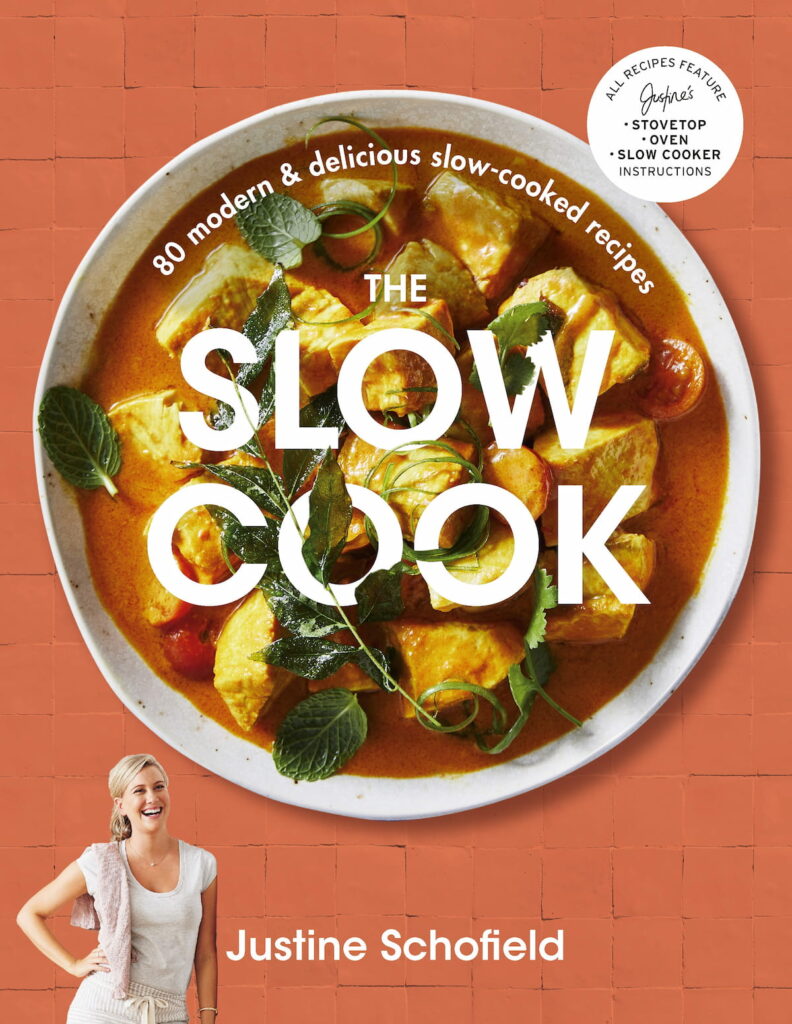If you pick up this week’s mag, you’ll see that we’re celebrating all things potatoes! This potato gnocchi recipe from MasterChef alumni Justine Schofield is the perfect addition to your autumnal cooking repertoire.
This recipe also comes with a slow cooker option, too, so you can prep, set and forget until it’s dinner time!
Sonya’s potato gnocchi with slow-cooked tomato sugo
Serves 6

1.5kg desiree potatoes, unpeeled
Salt flakes and freshly ground black pepper
2 eggs, lightly beaten
A pinch of freshly grated nutmeg
50g parmesan, finely grated, plus extra to serve
75g (1/2 cup) potato flour
150 g (1 cup) plain flour, plus extra for dusting
Slow-cooked tomato sugo
80ml (1/3 cup) olive oil
3 garlic cloves, sliced
2kg very ripe tomatoes (such as roma tomatoes), quartered
Salt flakes and freshly ground black pepper
1 Tbsp sugar
2 handfuls of basil leaves, plus extra to serve
Place the potatoes and a good pinch of salt in a large saucepan and cover generously with cold water. Bring to the boil, then turn the heat down to low and simmer for 25–30 minutes until the potatoes are tender. Tip into a colander and set aside to drain and allow the steam to dissipate for 15 minutes.
Using a tea towel, hold the potatoes and peel off the skins. Then, working in batches, pass the potatoes through a ricer or mouli straight onto a clean work surface. (Alternatively, use a potato masher.) Make a mound of the potato, hollow out the centre and add the egg. Sprinkle over a generous pinch of salt, a little pepper, the nutmeg, parmesan, potato flour and 100g (2/3 cup) of plain flour (you may need a little more or less, depending on the moisture in the potato). Lightly knead the ingredients together to form a soft, smooth dough. Be careful not to overwork it, as this creates dense gnocchi. The aim is to make them light and fluffy.
At this stage, I like to gently boil a small saucepan of water and test a piece of gnocchi by adding it to the simmering water and cooking it until it floats to the surface. Taste and check the seasoning and texture. If it is falling apart, don’t worry, you just need to incorporate a little more flour into the dough.
Now it’s time to roll the gnocchi. Dust the work surface with a little extra plain flour. Divide the dough into four even portions. Roll each portion into a 1cm thick sausage shape, then cut into 1.5cm pieces. Arrange the gnocchi in a single layer on a tray dusted with a little more flour. Cover with plastic wrap and refrigerate until ready to use.
To start on the slow-cooked tomato sugo, heat the olive oil in a large sauté pan over medium–high heat and add the garlic. As soon as it becomes a light golden colour (after about 1 minute), add the tomato and stir to coat in the oil. Season generously with salt and a pinch of pepper and add the sugar and basil.
Bring the sugo to the boil and cook until the tomato starts to break down, about 5 minutes. Turn the heat down to low, cover with the lid and cook, stirring occasionally, for 1–1 1/4 hours until thick and rich.
In batches, puree the sugo using a mouli; discard the skins. (Alternatively, force the sugo through a sieve or, if you’re okay with skins, use a wooden spoon to break up the sauce well.) Return to the sauté pan.
Bring a large saucepan of salted water to the boil and cook the gnocchi in batches for 2–3 minutes until they rise to the surface. Remove with a slotted spoon and add to the sugo. Gently toss and serve in shallow bowls with the extra parmesan and basil leaves.+
Tip: The potato gnocchi freeze well – just par-boil them first, refresh in iced water, then freeze on a tray in a single layer. Once frozen, store in zip-lock bags for up to 3 months.

Slow cooker method
Follow steps 1–4 to make the gnocchi.
Add the slow-cooked tomato sugo ingredients to the slow cooker, cover and cook on high for 4 hours or on low for 8 hours, or until the tomatoes have broken down and the sauce is thick and rich.
Follow steps 7 and 8.
For more autumn recipes, check out the Canberra Daily recipe archives here.








